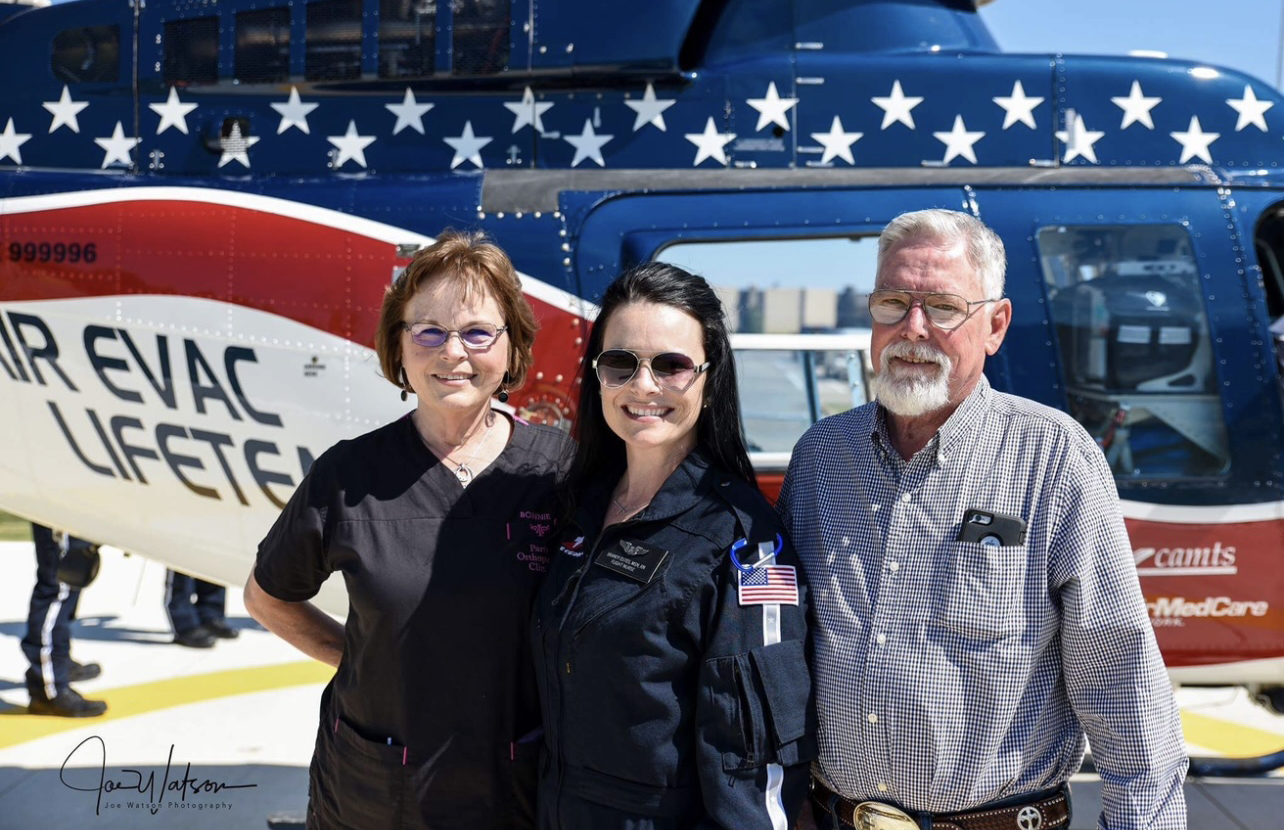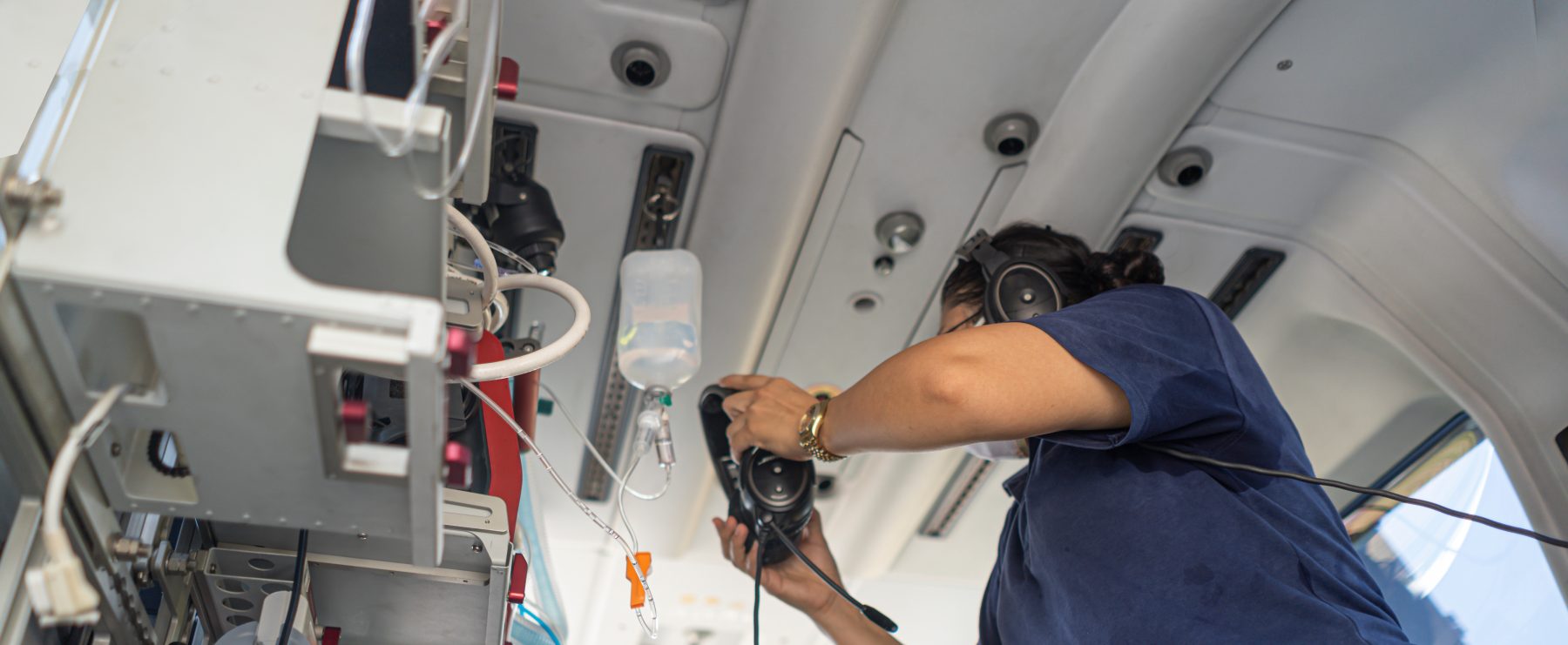A&M-Commerce Nursing Instructor Inspires Students to Take Flight
Few roles in healthcare are as dynamic and demanding as that of a flight nurse. These dedicated professionals provide quick, specialized care to critical patients during emergency air transport. Brandy Estes worked as a flight nurse for seven years before joining the nursing faculty at Texas A&M University-Commerce.
Recently, Estes reflected on the varied background that prepared her for success as a flight nurse and enhanced her ability to train future nurses at A&M-Commerce.
Taking Flight
Estes knew she wanted to be a flight nurse since she first set her sights on the nursing profession in high school.
“Flight nursing was my goal all along; it was something I always wanted to do,” she said. “I graduated from nursing school in 1995 and started working in the emergency room not long after.”
Estes spent nearly 19 years honing her critical care skills in emergency rooms and intensive care units while raising a family and earning her master's in nursing education and administration. When her children were older, she seized the opportunity to fulfill her dreams and take her career to new heights as a flight nurse.
Dynamics of Flight
Flight nurses serve a vital role in healthcare, quickly connecting critical patients in rural communities and remote locations to facilities with higher levels of care. The chaotic nature of the job means flight nurses must be well-versed in critical care skills learned in emergency rooms and intensive care units.

Estes explained that nurses in hospital or clinical settings usually work in relatively controlled environments, unlike the treatment space in an aircraft.
“When you're in the air, it's just you and a paramedic. So, it's a completely different mindset,” she said.
Estes added that flight nurses work grueling, unpredictable, 24-hour shifts.
“There can be shifts where you don't get a call at all or shifts where you get multiple calls,” she said.
When a call comes in, the flight nurse and paramedic learn whether it's an on-scene or inter-facility transfer. They then check the weather to ensure conditions are safe to fly.
“Once we're in the air, that's when we're given patient information,” Estes said.
Some calls, she explained—such as those involving pediatric patients—are more stressful than others. Therefore, patient information is withheld on the ground.
Emotional Pull
Estes revealed that flight nursing often results in more emotional attachments to patient outcomes. While traditional nurses may see numerous patients in various phases of their care journey, flight nurses spend critical one-on-one moments with patients who have experienced catastrophic events.
Although many stories stand out, she recounted a particularly memorable one. Only months after becoming a flight nurse, she arrived at a scene involving a pediatric patient experiencing multiple complications from an animal attack. Estes and her flight partner reacted quickly, employing innovative techniques to keep the patient alive and stable while transporting them from one state to another, including a refueling stop.
“It was very challenging,” she recalled, noting that their methods amazed the physicians at their destination.
Estes credits quick thinking and adaptability as key factors in changing the child's outcome. Although she had worked as a nurse for two decades at that point, she said the emotional experience changed her.
“For the first time, really, I felt validated as a nurse,” she said. “We worked really hard to save the patient. It seemed like everything was going wrong. The odds were not in their favor, but they went on to make a full recovery.”
From the Clouds to the Classroom
Estes worked as a full-time flight nurse for seven years before joining the nursing faculty at A&M-Commerce in Fall 2022, where she teaches Adult Health II. She still works as a part-time flight nurse and picks up occasional emergency room shifts to stay sharp.
Though the contrast between flight nursing and teaching is significant—flight nursing requires quick thinking and immediate action while teaching focuses on building foundational knowledge—Estes believes her experiences in the clouds have enhanced her ability to train future nurses.
“Flight nurses often say, ‘Don't look down the rabbit hole,'” she said, emphasizing the importance of quickly assessing injuries, stabilizing the patient and keeping them stable throughout the flight. Focusing too much on one problem can have detrimental effects on the patient's outcome.
Therefore, Estes helps her students build foundational knowledge in the classroom, while challenging them to think quickly and broadly when assessing patients during clinicals.
Her career has inspired some A&M-Commerce nursing students to consider flight nursing as a career path. She warns them it's a challenging and competitive process.
“Several students want to hear stories about it. They want to know what I would do in certain situations, or how long it took me to get qualified and certified,” Estes said.
“It doesn't happen overnight,” she tells them. “It usually takes at least 3-5 years to gain the necessary critical care experience, but it's different for every person. Then, there are the national certifications.”
She advises interested students to set goals, gain critical care experience early, and begin acquiring the required national certifications.
“But don't work yourself to death,” she added. “Enjoy what you do because you'll spend more time at work than you probably will with your own family. If you're not driven or passionate about it, then redirect.”
Benefiting Students and Industry
Estes said demand for flight nurses varies. Despite the rigorous training, competition for jobs remains high due to the specialization required. She said positions are more readily available in urban areas where flight services are typically based.
While most nursing students follow more traditional career paths, the valuable insights and skills Estes shares from her career can benefit any A&M-Commerce nursing student on their path to becoming compassionate, knowledgeable, well-rounded healthcare professionals.
Ready to spread your wings as a nurse? Explore opportunities available through the Department of Nursing at A&M-Commerce.






